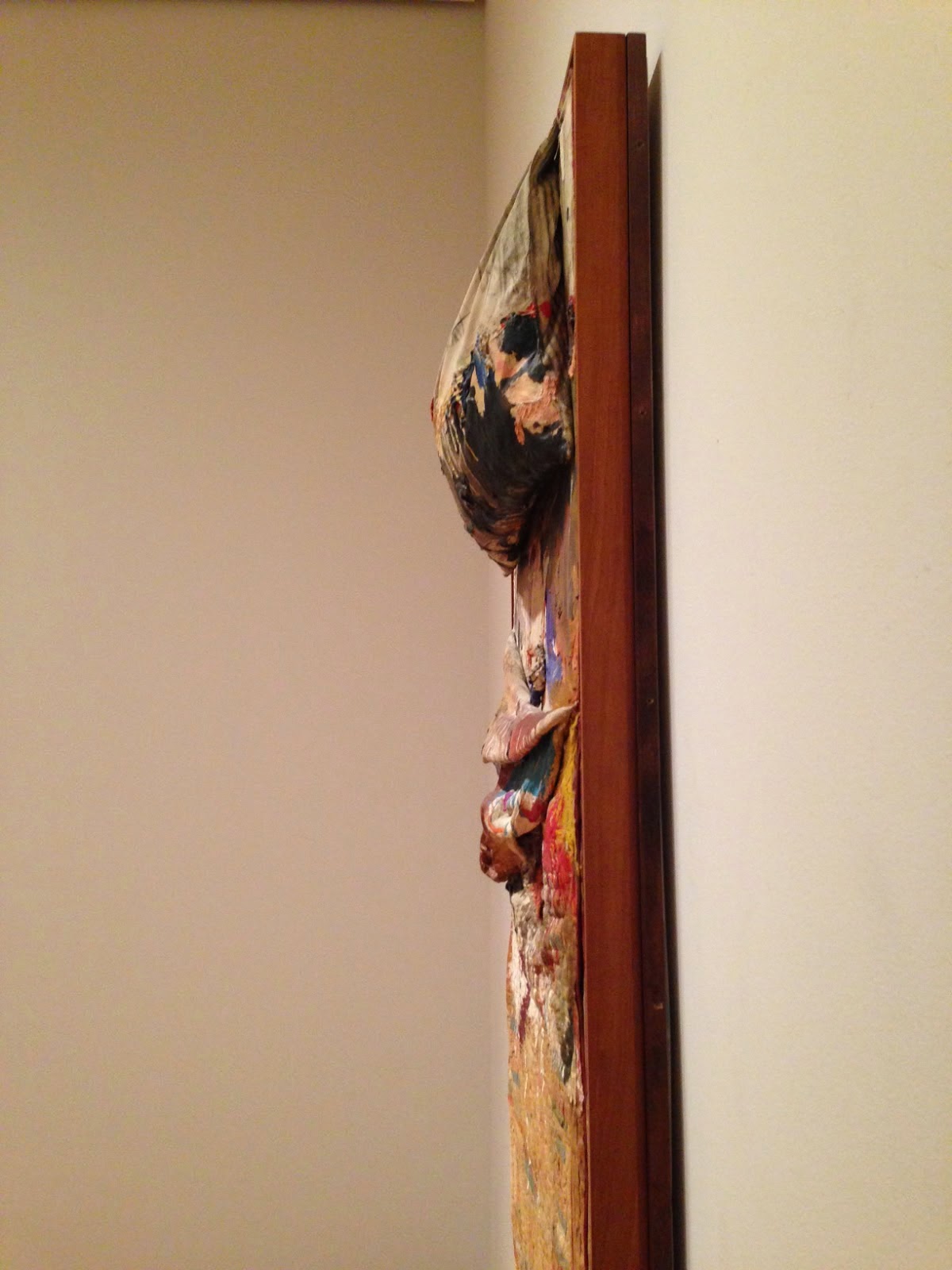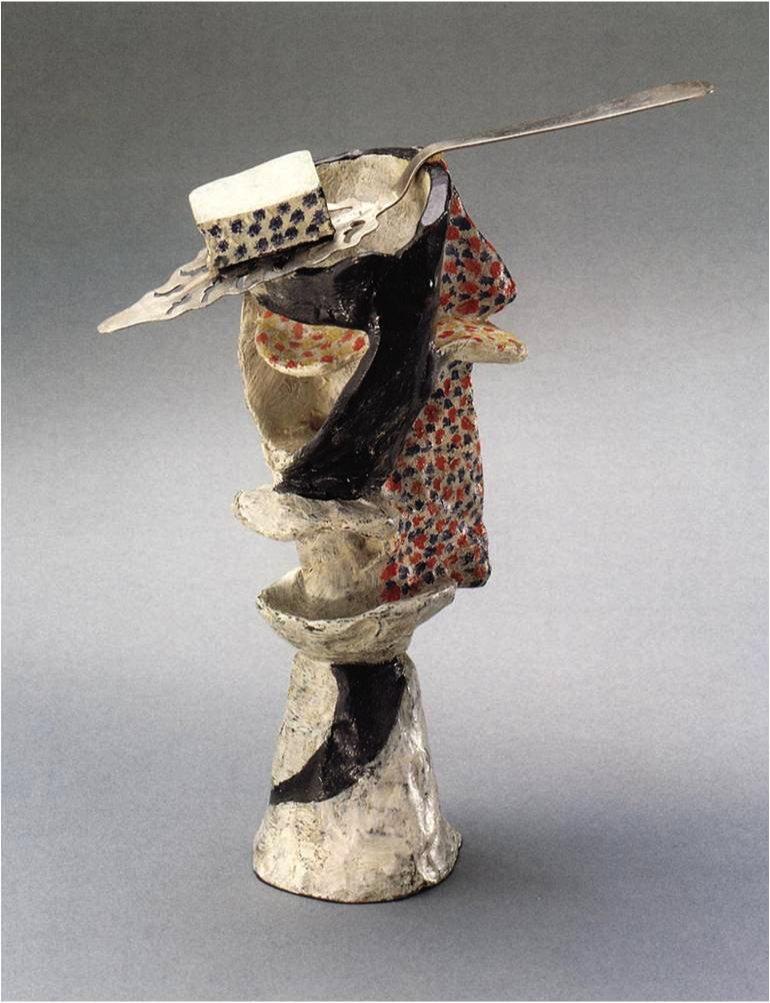History of Western Art, Architecture, and Design
Tuesday, December 2, 2014
Warhol's Jackie The Week that Was
Sunday, November 30, 2014
Robert Rauschenberg's Bed
Robert Rauschenberg's 1955 Bed is an example of what he called a "combine," a work of art that melds painting, sculpture, and collage. Rauschenberg was inspired both by the Cubist innovation of collage as a means to bring the materials of everyday life into works of art, and by the gestural painting techniques of Jackson Pollock, which you already discussed in section and which we will be addressing at greater length in lecture of Tuesday. What kinds of implications does Rauschenberg's Bed suggest to you? What does it mean to take a intimate object like a bed (where one sleeps, makes love, etc.) and to hang it vertically on the wall of an art museum? How is Rauschenberg's approach to both collage and painting similar or different from Picasso's and Pollock's?
Sunday, November 23, 2014
Salvador Dali's Phenomenon of Ecstasy
Salvador Dali's 1933 "Phenomenon of Ecstasy" is a photomontage, or collage of photographs, that represents how artists who were part of the Surrealist movement adapted photography and collage (both still relatively new media) to their interest in exploring unconscious states of mind, dreams, fantasies, etc. Surrealists sought out new artistic processes as a means both to excavate and represent a new understanding of the human mind inspired by the psychoanalytic studies of Lucien Freud. At the same time that Dali is interested in unconscious phenomena, however, he is also looking back to an interest in expression and emotion evident already in classical sculpture and seventeenth-century Baroque works like those of Bernini. How might you compare and contrast Dali's interest in the ecstatic body to Bernini's sculptures "Ecstasy of St. Teresa" or "Pluto and Prosperina?" And why do you think he focuses here almost exclusively on female subjects... or does he?
Wednesday, November 19, 2014
Picasso's Absinthe Drinker and Glass of Absinthe
The Spanish artist and pioneer of Modernism Pablo Picasso, in his painting of an "Absinthe Drinker" from 1901, reflects the culture surrounding this highly intoxicating spirit. Absinthe was thought at the time to have hallucinatory effects and was popular in France already in the nineteenth century. The woman holds a sugar cube in her hand, which was used in the drink's preparation. Once the absinthe was poured in a glass, a sugar cube was placed atop a slotted spoon and dissolved by cold water poured on top of it, creating a milky effect in the drink itself. Over a decade later, Picasso returned the subject in a small sculpture "Glass of Absinthe" from 1914 (21.6 x 16.4 x 8.5 cm), which is created from painted bronze. What has changed in Picasso's approach to the subject matter of absinthe drinking between his 1901 painting and the 1914 sculpture? To what extent is the sculpture "representational," in other words, to what extent does it actually depict something as one would see it in the real world? Or does it seem instead to do something else?
Sunday, November 16, 2014
Thomas Edison's Brooklyn Bridge
Thomas Edison's short film from 1899 "New Brooklyn to New York via Brooklyn Bridge, no. 2" represents both the nature of early cinematic production, before the advent of narrative film, and an interest in the modern city that we began to trace last week in our discussion of nineteenth-century Paris. In this two-minute clip of a train crossing Brooklyn Bridge, what does the filmmaker seem interested in capturing for his audience? How does the film figure the city of New York in a way similar or different from the representations of industrialization and growth apparent in the works of the Impressionists? And how might we understand Brooklyn Bridge as a modern counterpart to the Gothic cathedral?
Tuesday, November 11, 2014
Van Gogh's Pair of Shoes
Vincent van Gogh made several paintings of shoes, including this work from 1885, which sparked an exceptional debate among twentieth-century art historians and philosophers including Martin Heidegger and Jacques Derrida. You might ask how a painting of a pair of shoes could generate so much discussion? That such a debate came about raises the question of what Van Gogh was after in making a painting of boots in the first place. Is this just a random still-life of what happened to be laying around Van Gogh's studio, or do these shoes bring up particular associations for you? And is there any implication in your mind of the individual (or social category of person) to whom these shoes belong? What significance do you see in the details Van Gogh chooses to emphasize and in the way he handles the paint itself (brushstrokes, thinness/thickness of paint, etc.)?
Sunday, November 9, 2014
Mary Cassatt's Interior of a Tramway Crossing a Bridge
Mary Cassatt was a nineteenth-century American painter and printmaker who made her career in France as one of the foremost female Impressionist artists. Her work is often described as characteristically "feminine" in her focus on representing women, girls, and mothers in intimate, soft interiors. In this print, however, Cassatt addresses a new phenomenon of modernity: the working woman out in public. Riding in a tramcar (itself a modern innovation) are a working woman dressed in a high-collared dress and a nursemaid holding her baby. Cassatt combines the media of drypoint etching and aquatint in creating this remarkably stark image. What strikes you as significant about the details that Cassatt chooses to include in this print, and what do you imagine we are meant to understand about the sentiments and relationship between the figures represented?
Subscribe to:
Posts (Atom)








